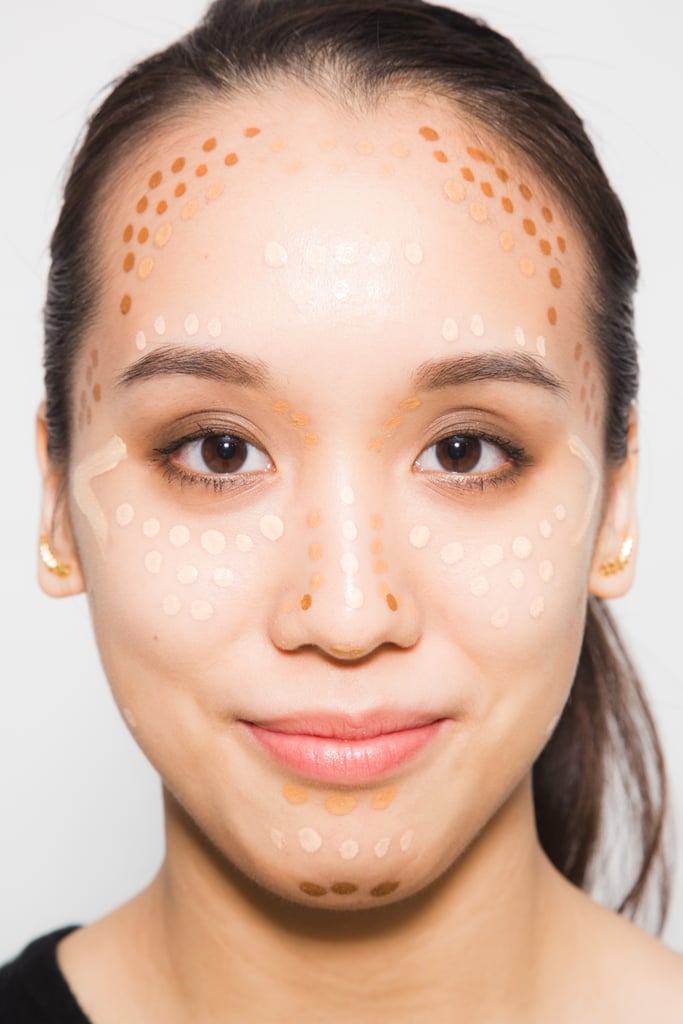

Other notable gyaru recently in this medium are Yuki Kimura, known for her magazine and online alias as Yukipoyo and model Iwamoto Sayaka, being known as Usatani Paisen. Popular recurring gyaru models, icons and idols who may have been easily recognized during its peak were Tsubasa Masuwaka, Kumiko Funayama, Rie Matsuoka, Hikari Shiina, Kaoru Watanabe, Kanae Watanabe, Hiromi Endo, Aoi Mano, Satomi Yakuwa, Sayoko Ozaki, Yuka Obara, Rina Sakurai, Nana Suzuki, and twins Gura and Guri Yoshikawa. They are also known for partying or clubbing, being rather provocative, being flirtatious, and unwinding and having fun. Its popularity peaked in the 1990s and early 2000s. For Japanese women who saw those who participated in this fashion during its rise, they considered it a fashion style too racy and freewheeling with some feeling it caused a ruckus, juvenile delinquency and frivolousness among teenage women.
#E girl bad nose contour skin
It is a fashion subculture that is considered to be nonconformist or rebelling against the Japanese standards of its society and beauty at the time when women were expected to be housewives and fit the Asian beauty standards of pale skin and dark hair. Some groups and people follow a type of Japanese street fashion with many subcategories and substyles of which many types originated in the late 1970s. Gyaru is a description of any gender, but is considered for women when referring to gyaru.

Second hand and vending of gyaru apparel and accessories also increased their availability. Although 109 began as the primary source of gyaru style clothing, the style's growth in popularity saw brands branching out, having different brands of clothing being available at pop up stores, in conventions or through web shops that offered international shipping. In the early 2000s, Shibuya 109 was considered the source of the newest and trendiest items or brands for gyaru, from popular and largely recognized gyaru brands to more independent local designers within that department store. The department store Shibuya 109, across the intersection from the Shibuya station in Tokyo, was a popular location for purchasing gyaru style clothing and was where this fashion subculture was most often seen. Yet, it can be stated that this very same sentiment is argued against by other Japanese citizens. Even though Japanese citizens have seen the style of gyaru from birth, impact, and decline, citizens have stated to have never had the intention of imitating the American style of daily apparel or of wanting to resemble it. Due to its past and its present connotation, it is now used almost interchangeably with kogyaru as the name of kogyaru and its history is intertwined with the gyaru fashion subculture. The meaning of the term gyaru gradually drifted to apply to a slightly older demographic whose apparent lack of interest in work or marriage resulted in these women being regarded as childish or as a hussy. This decline has been attributed to shifts in magazine industry, the exaggeration of the style in terms of its style use and progression, western media, and government policies. The term's usage peaked in the early 2000s and has gradually declined since. Multiple gyaru brands branched out before eventually declining due to financial instability and changes in its target demographic. It had a large influence on Japanese fashion and its economy, its international economy, and its global soft power across the world through Cool Japan such as in Southeast Asia and internationally. Gyaru subculture was at its peak during the Heisei era. When the women's jeans line 'GALS' was released in the 1970s the term had been quickly used outside of its original branding and was adopted to describe the gyaru fashion by 1972. The term for gyaru was introduced in Japan by the American jeans company Lee, who introduced a new line of jeans to their brand Wrangler. The term gyaru is a Japanese transliteration of the English slang word gal. Gyaru ( Japanese: ギャル) pronounced, is a Japanese fashion subculture. Shibuya 109 gyaru store staff from the Japanese brand Golds infinity (30 November 2010) ( Learn how and when to remove this template message) Please discuss this issue on the article's talk page. Please consider splitting content into sub-articles, condensing it, or adding subheadings. This article may be too long to read and navigate comfortably.


 0 kommentar(er)
0 kommentar(er)
